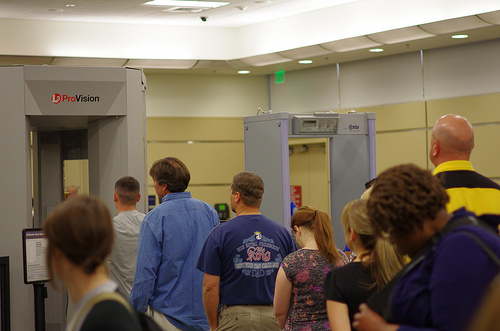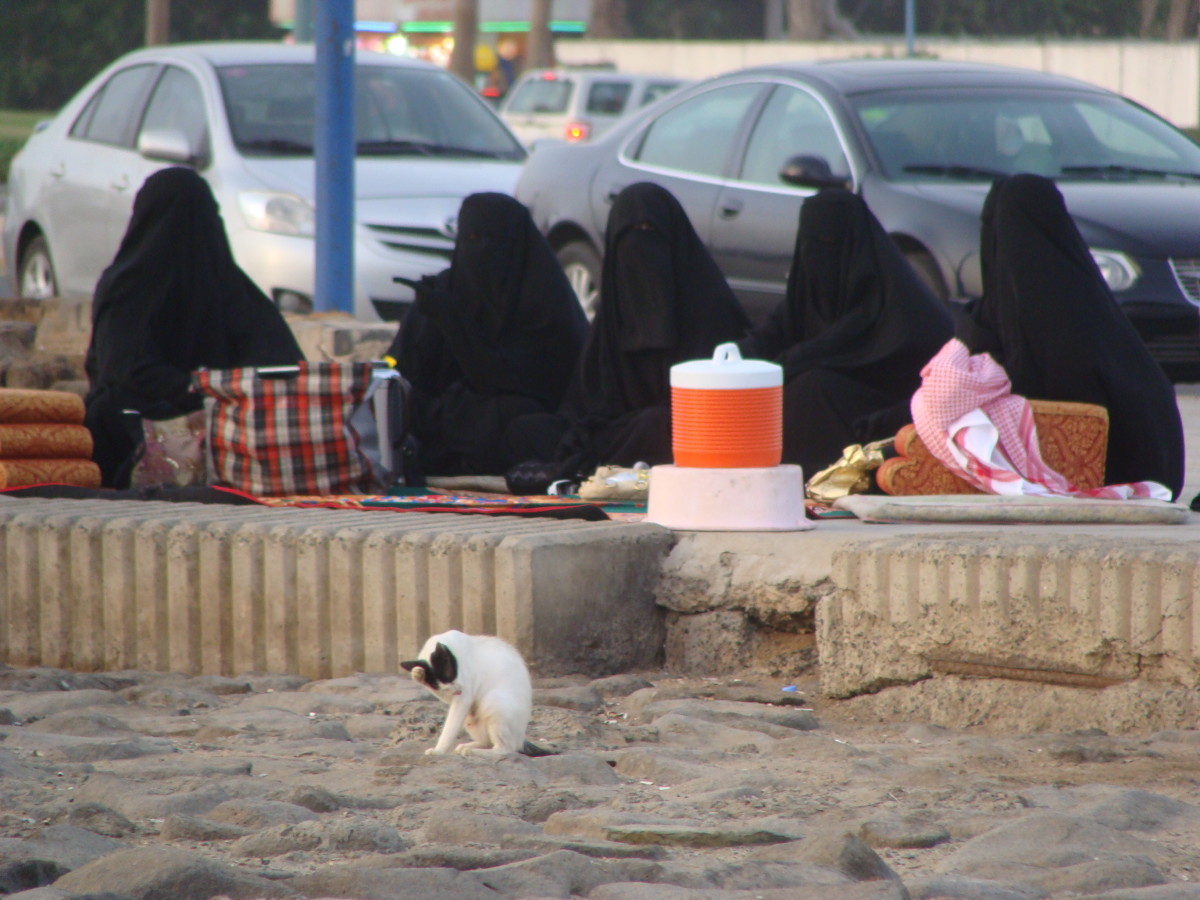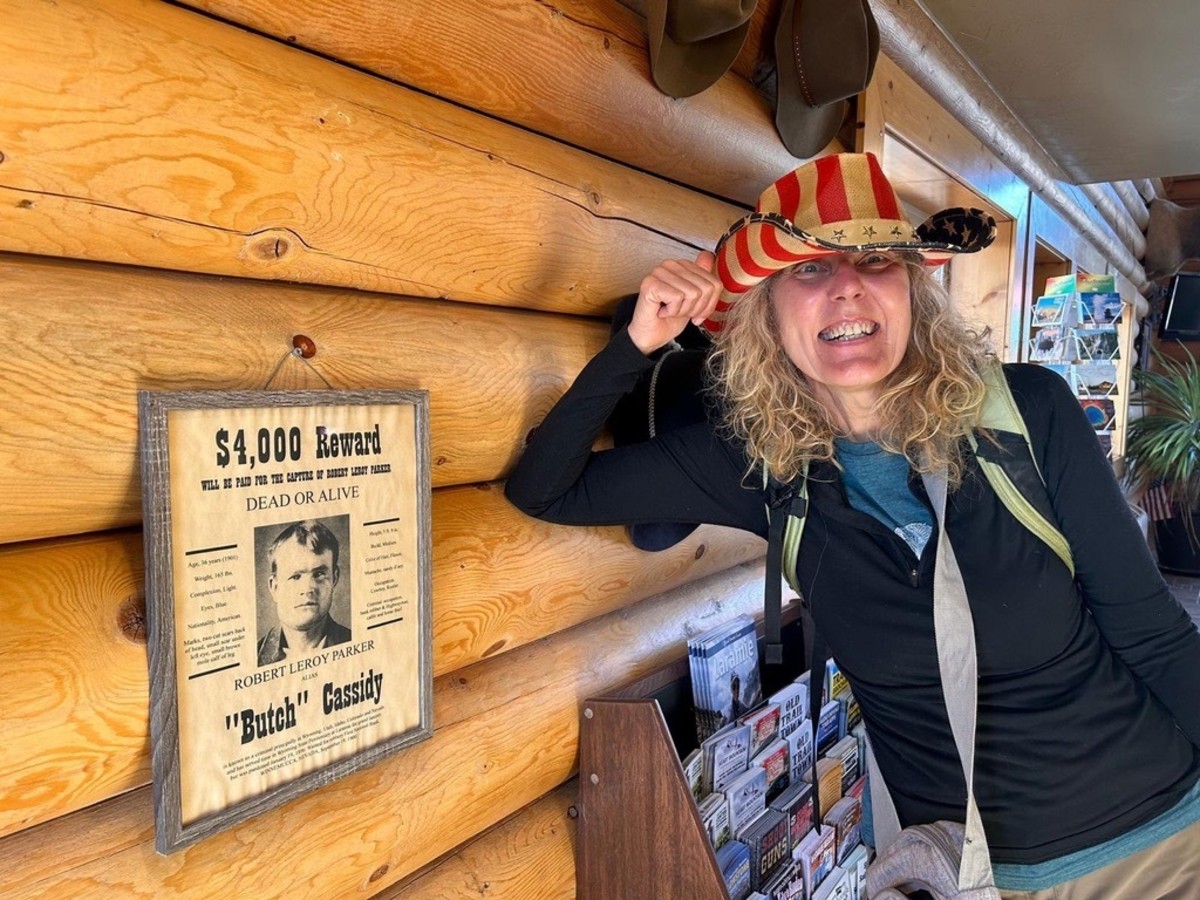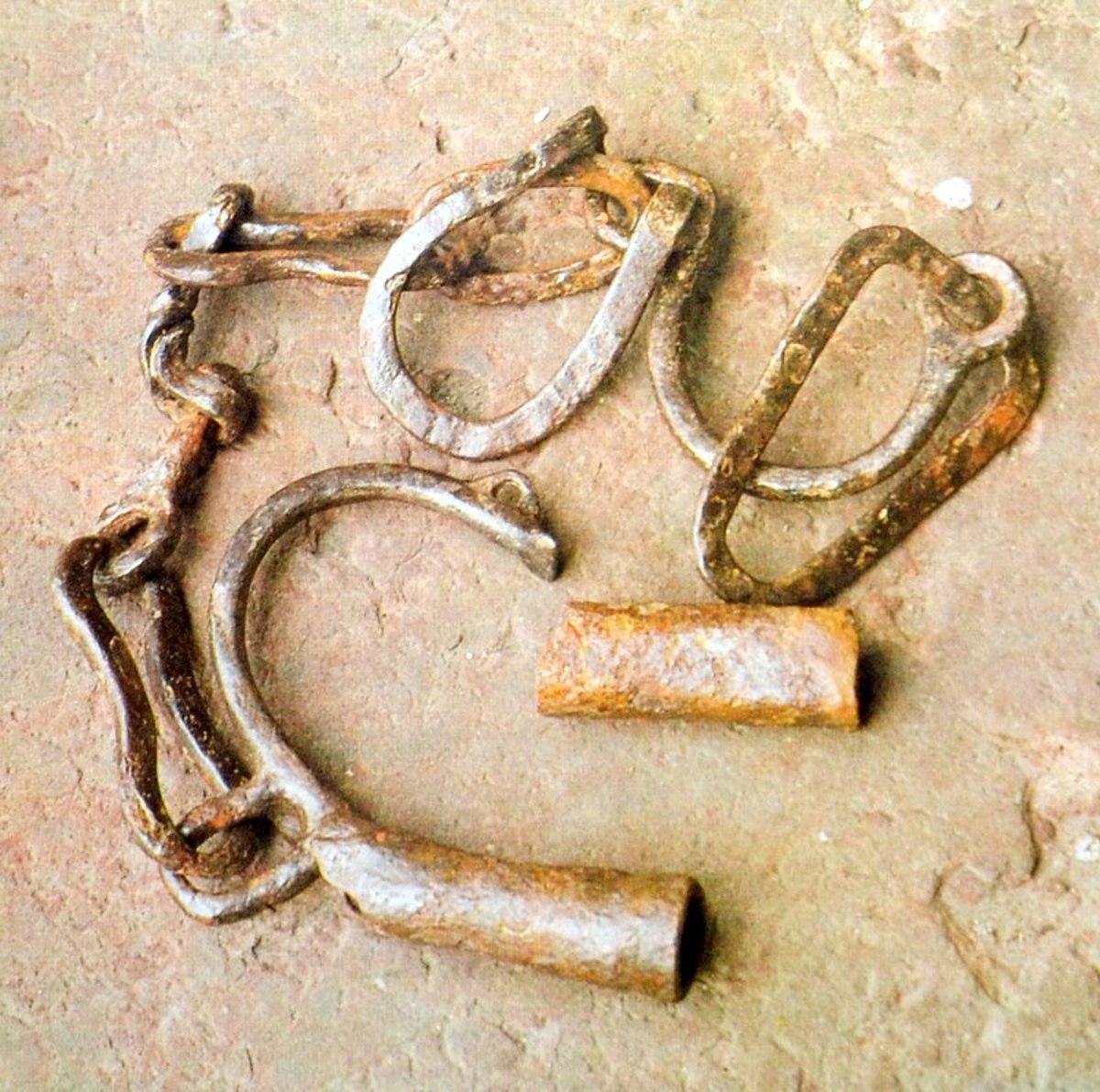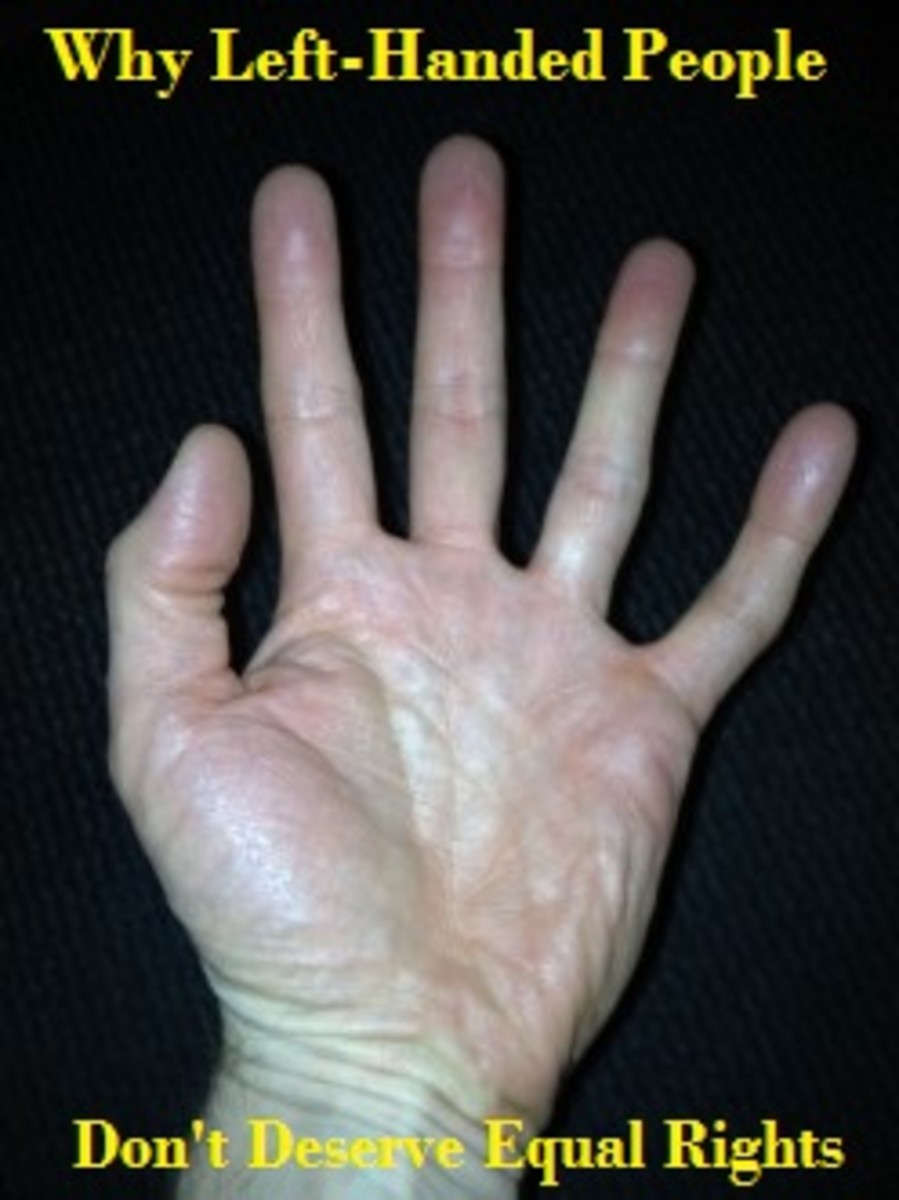How to Get Ready for a TSA Body Scan or Pat Down
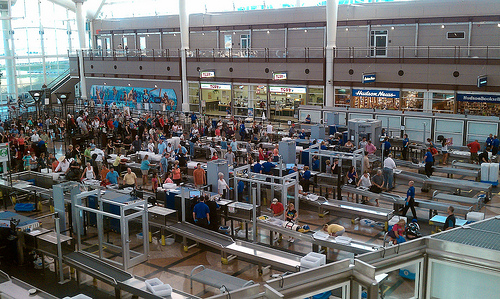
Transportation Security Administration (TSA) was formed shortly after the 9/11 incident to secure all transportation services from threat, and to keep our people and businesses safe while still giving them the freedom to move about.
In November 18, 2001 Congress signed the Aviation and Transportation Security Act and charged the TSA with the responsibility of meeting each and every one of the 20 mandates by the end of 2002.
On March of 2003, the TSA was moved from the Department of Transportation (DOT), to the newly founded Department of Homeland Security which was founded on November 25, 2002. This transfer brought all involved agencies together to respond against any threat to the homeland.
In my travels, I try to prepare in advance what I have to do with respect to TSA and the individual airline's rules. If you are prepared, you will find that getting through airport security is a snap. In this hub, we will cover the following important topics to help you get through airport security with as little delay as possible:
- Airport Rules
- TSA Regulations
- Laptop and Airport Security
- Liquids and Airport Security
- How to Go Through Airport Security
- Airport Pat-Downs
- Whole Body Scans
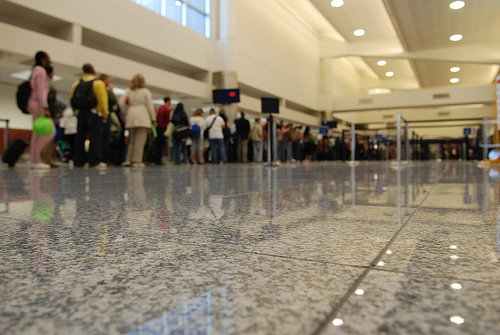
About this hub...
Segments of this hub were gleaned from the tsa.gov page. There is a link towards the beginning of this article that supports any questions that you may have concerning policy, rules and regulations during your travels. Other information provided in this web has been accumulated throughout my travels in the past several years, and is how I normally prepare for airport security. Peace. Kawi.
Airport Rules
Since terrorism, and the threat of terrorism has reared it's ugly face in America, there have been a lot of changes in the way we take and use transportation for ourselves and the things that we want to move across America.
Kids today don't realize that years ago, you could walk with your loved ones all the way to the gate. You could wait with them there, and stay until you could actually see their plane take off. A few years earlier than that, no one really cared what your name was or if it matched the ticket at all. Air lines just wanted to sell tickets and fill seats. Period.
Luggage could be ridiculously over-weight, over-sized, and for a small fee you could take on more luggage. Flying was an event, and you usually dressed well for it - and get this kiddies; Smoking WAS permitted! That's why that no-smoking light is on your overhead. It was a time when smoking was quite glamorous - and everyone and their brother did it. Today, you are sentenced to some cornered area away from everyone with lungs, in the cold, unsheltered parking lot or plot of space that was once condemned by Hazmat. Tomorrow, you'll be in your car with the windows up in that Hazmat lot.
Today, the jet-set attitude to dress is super casual. No layers, no shoes with laces, no bulky clothing that would inhibit movement in those cramped quarters, and no unnecessary jewelry or other metal objects. Comfortable slip on shoes, no heavy jackets - in other words, dress like you would dress if you were going to a friends house for a casual visit.
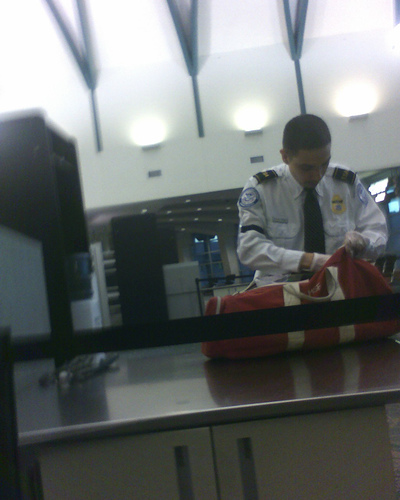
TSA Regulations
The Transportation Security Administration or more simply 'TSA', has several rules and regulations to ensure your safety, and those around you. The TSA was formed two months after the 9/11 attacks on New York city and Washington DC.
TSA agents are federal government employees, they are highly trained in their field and shoulder an incredible amount of responsibility. The listing that follows will give you an over-all, genral information of what is allowed/disallowed at airport security. For a more descriptive and exact listing of items that are allowed or disallowed please visit the TSA link that I have provided below. There is also an apt called 'My TSA' that can be downloaded onto smartphones and other devices for your convenience.
You should realize that even though an item is allowed, it is up to the discretion of the TSA officer(s) that will decide if the item is safe for transportation with you. When in doubt, don't run the risk of having the item left behind, leave it at home.
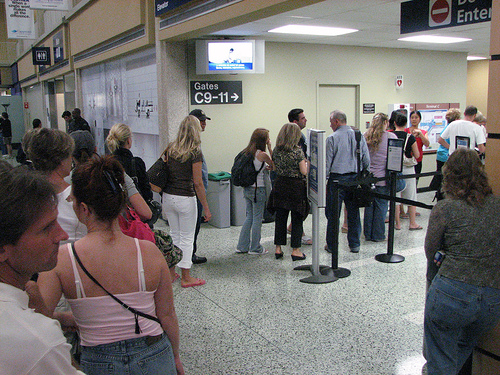
Item Prohibited by the TSA
Item Category
| Carry-On
| Checked Luggage
|
|---|---|---|
Objects that are sharp
| Nothing sharp 4" or longer
| Okay
|
Work tools
| No cordless tools, no tools longer than 7"
| Okay
|
Sports Equipment
| No
| Okay
|
Explosives, Flammable Materials & Chemicals
| No
| No
|
Firearms
| No
| Okay, declared at check-in and within reason. Check with individual airlines.
|
Other dangerous items
| No
| 4oz pepper spray, and self defense weapons okay.
|
For more information on items listed above, check with the rules and regulation of each airlines, and the TSA.
TSA Link to more information
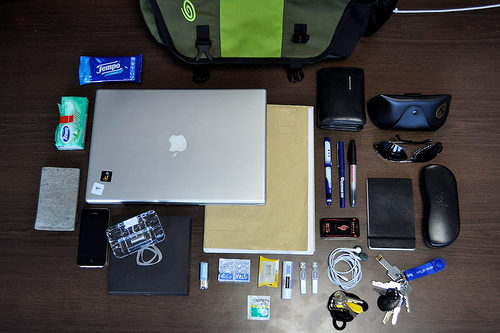
Laptop and Airport Security
Rule one, if you don't need it, don't bring it. It just adds one more thing that you have to worry about damaging during the flight, or missing in lost luggage. If you can see yourself doing without it, don't bring it. I've travelled with a small laptop thinking that I would use it to write whenever I could while on vacation - I never unpacked it from it's case. If you have a smart phone, you can probably do without the laptop.
But, if there is a need, here are a few things you need to know:
- For most folks, a laptop checked in your luggage is just tempting fate...I mean, have you seen the baggage handlers with suitcases? They are pretty rough with them, and they don't prejudice their decision whether to put a Gucci bag or a duct-taped duffle bag on the bottom of a four-high stack of suitcases.
- If you have a special backpack designed to carry your laptop and other electronics, use it. Make sure all your electronic equipment (especially your laptop, i-pad, kindle, etc.) is charged up and you are able to power it on in case you are asked by a TSA agent to do so.
- Situate your carry-ons that you can act unpack them swiftly and without much fuss while in the checkpoint line.
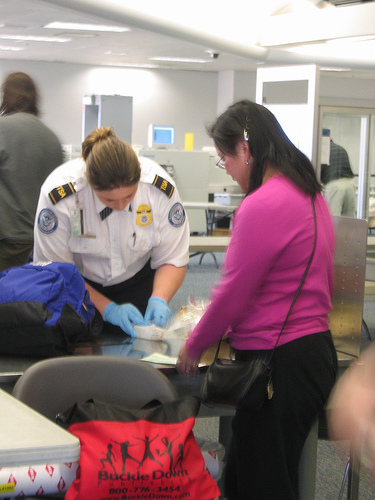
Liquids at Airport Security
It use to be really confusing when the TSA rules first came out, no one was ever a 100% sure of what was allowed and usually learned the hard way when either they had to leave something behind, or had the item confiscated. The hair jell, was one item that was always overlooked, and most often left behind.
The rule for all liquids - jells included - is that they are permitted items not on the restricted item lists, and that they are contained in zip-loc bags so as to not be a problem leaking everywhere. If you have make-up jells (even lipstik), hair jells, cologne, shampoo etc, they need to be no more than 3.4oz, or 100mls, and contained in zip-lok bags.
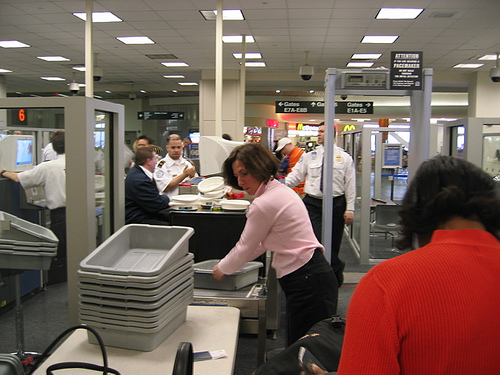
How to Go Through Airport Security
After check-in, whether you used a self-service computer, or checked your bags at the check-in cournter, you will receive your individual boarding pass. Keep this handy - I always travel with a shirt that has a breast pocket just for this purpose. I have my government issued ID and my boarding pass in my breast pocket.
- You should now be walking towards the TSA checkpoint. While walking, I am removing any mettle that I have on my body, and placing it in a small compartment in my backpack. My watch, ring, cell phone, and when I get closer in line to the checkpoint, my belt will also go into my backpack.
- The first stop is for your ID, and boarding pass. The TSA agent will look over your boarding pass, and your ID. Be patient, and civil. The nice ones make small talk and attempt to make this a pleasant experience.
- From here, you will be split up for the x-ray machines. Here is where the non-travelers and experienced travelers separate. Loose your slip on shoes while still in line, if you haven't removed any final metals from your body, do so now, and slip it into a compartment in your personal carry on. Don't forget your metal wallets, coins and money clips. My ring and glasses are the last to come off.
- At the line, there will be several gray tubs, and little plastic bowls for your smaller items. I'll place my carry-on luggage on the belt first to free up my hands for the rest. I have all my liquids in zip-lok bags in the front zipper of my carry-on. My shoes will pop off and go into one tub, and I'll place my zip-lok liquids in with my shoes. Next my backpack goes into a tub. One more tub for my iPad or laptop that I took out of the backpack, open the case to expose it, and push all onto the conveyor belt.
- Do a final check of your pockets, glasses, rings etc and place them in one of the tubs if you've forgotten anything. You will now proceed to the metal detector, body scan, and/or a pat-down. Once you're through, grab your belongings off the belt in order. Grab the liquid zip-lok bags and slide them back into your carry-on, put on your shoes (even if half on), close your laptop case and slide it into the zipper of your backpack, and you're through. A final inspection of all the tubs to make sure you've left nothing behind, then find seat or table where you can make final adjustments before heading to your gate.
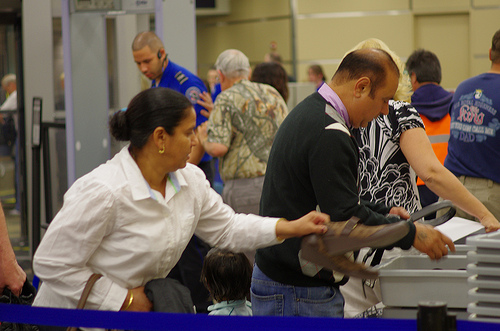
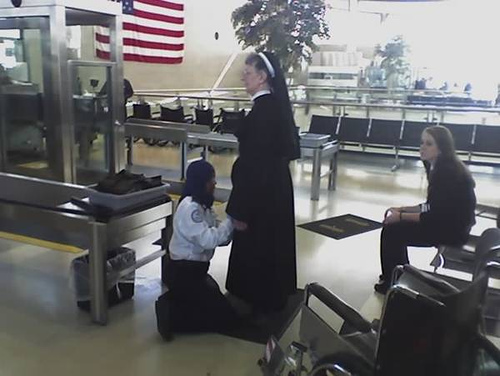
Airport Pat-Downs
If you've never been on the receiving end of a criminal or security pat-down, this might be something that you need to prepare yourself for. I saw a TV show years ago where a female agent would ask certain individuals for their permission to search them. When they said okay, I don't think the men understood that she herself would be handling the pat-down herself, and that she was actually handling their private parts. She was very matter-of-fact, and treated the men as cattle, but the startled faces of surprise, embarrassment, and utter astonishment was disturbing.
During your pat-down, an agent of your same sex will be administering your pat-down, if one is not available, you may have to wait till one is. The pat-down is mostly random, but it will be administered if you beep with metal in your pockets, fail to follow instructions with pulling your laptop out of your bag, or they see anomalies identified by Advanced Imaging Technology (AITs). You have a right to a private screening in a closed room, you can choose to have someone accompany you to be with you while you go through the pat-down. Children may be subject to a modified pat-down so to avoid all of this, make sure you empty out your pockets, and that you don't wear any clothes with a million zippers sewn into them.
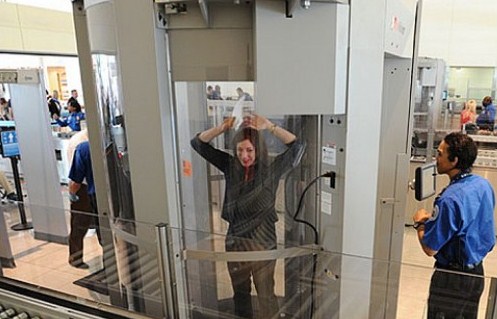
Scans and Pat-downs
Whole Body Scans
Advanced Imaging Technology or AIT is the name by which these imaging systems are called. TSA says that there is no harm to the public with the use of AITs, and they also claim to protect the privacy of the individual being scanned because the person that is actually looking at the scans can see your everything.
There is some question as to the effectiveness of the AITs due to the amount of anomalies that it picks up from just about anything on a person's clothing. This is why when they ask you to empty your pockets, empty all your pockets and send it through along with your things. A piece of candy in your hip pocket will cause an anomaly on your scan. When an anomaly shows up on your scan, a TSA agent will approach you and ask you what you have in your pocket. This may move right into a pat-down, or a re-scan - both of which will take time.
When you approach the scanner, listen to the TSA agent's instructions, and if there is any physical limitation on your body that prevents you from holding out your arms for too long, let the TSA agent know right away. Also if you are going into the scan with Insulin devices, any other medical device, or metal plates in your body will slow you through the process. For some of these devices, a swab for explosives on your clothing may take place.
In any event, as much as possible, listen to the agents instructions, and do what they say to do. Any deviation will delay getting you processed through the security checkpoint.
